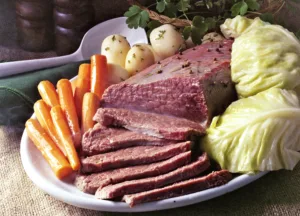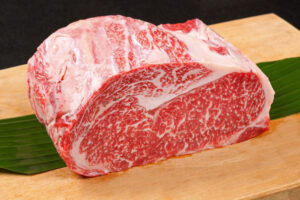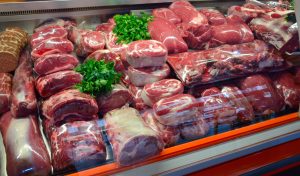Irish Cattle & Sheep Trade & Prices w/e 31/03
Cattle & Beef
Throughput: There were 31,967 cattle processed in DAFM approved plants during the week ending March 31st 2024, taking throughput for the year to date to 462,669 head. This is a 10,947 head or 2.4% increase on the corresponding period in 2023 when a total of 451,722 cattle were processed. There have been 328,559 prime cattle processed in the first 13 weeks of 2024, a 2% increase from the same period last year (+8,879 head). Cow throughput has remained strong with 114,783 cows processed so far this year, a notable increase of 14,625 head (+15%)
Prices: Prime cattle supplies have steadied, and this has been reflected in a steadying of the base quotes from the major processors, with base quotes remaining to be unchanged from last week. Base quotes this week are in the region of €5.10-5.20/kg for steers while starting quotes for heifers are around €5.20-5.30/kg. The trade for the smaller numbers of young bulls on offer remains steady with €5.20-5.30/kg available for R grading animals under 24 months of age.
The cow trade has remained solid despite the strong throughput in recent weeks. Well fleshed O grading cows are being quoted at €4.40 with €4.50-4.60c/kg available for good quality R grading cows. A significant proportion of the cow kill have achieved a conformation score of P in recent months and the prices available for these animals vary significantly based on grade, weight and quality.
For the week ending March 31st 2024, the average price paid by Irish beef processors for R3 steers increased slightly by 2c/kg to €5.19/kg. This was 9c/kg behind the corresponding week in 2023 when the R3 steer price was €5.26/kg. Note that reported prices exclude VAT but include all bonus payments such as in-spec bonus, breed-based producer groups etc.
EU and UK prices:
European young bull prices have held relatively stable in the early weeks of 2024. The average reported price for R3 grading young bulls was €5.06/kg (excluding VAT) for the week ending March 31st 2024. This is the same as week 13 last year. Tighter cattle supplies and firm demand have meant deadweight beef prices in the UK have remained strong. This week the average R3 steer price reduced marginally to €5.69/kg (equivalent to £4.88/kg).
Sheep Trade & Prices
Quotes: Base quotes for hoggets from the major processors have held steady this week with base quotes of 870-900c/kg (+QA bonus) on offer. Declines in the European sheep flock and a move towards killing lighter lambs in some regions to combat higher production costs have resulted in tighter availability of sheep for processing in the early months of 2024. There has also been a significant decline in hogget availability in the UK with the latest AHDB forecast indicating a 10% decline in hogget carryover. Tighter supplies are expected until the 2024 lamb crop starts to come forward for processing in significant numbers. Small numbers of spring lambs have started to be processed in Irish processing plants with quotes of 920c/kg (+QA bonus) available.
Demand for lamb on both the domestic and export markets has shown some signs of recovery as indicated by Kantar figures and Bord Bia’s own market insights. However, as the highest priced protein lamb continues to be the most exposed to shifts in consumer buying habits in response to high levels of inflation.
Prices: Rising demand for lamb in the run up to Easter and Ramadan combined with tighter supplies in both the UK and mainland Europe have contributed to the significant strengthening in eth Irish deadweight trade during the first quarter of 2024. Last weeks reported price increased to 861c/kg, an uplift of 16c/kg from the week previous. In the corresponding week in 2023 the reported price was 676c/kg. The deadweight trade has also remained firm in the UK regions with reported prices the equivalent of 978c/kg (-4/ckg) in mainland GB last week while the reported price in Northern Ireland was 813c/kg (+3c/kg) for w/e 23/03/2024. Southern Hemisphere prices remain well below European prices which makes Southern Hemisphere product very competitive on EU markets, even with the extra costs of transport factored in. Deadweight lamb prices in Australia and New Zealand were 396c/kg and 338c/kg respectively last week.
Throughput: The total sheep kill in DAFM approved plants for week ending March 31st 2024 was 59,043 head which was a decline of 5,452 head from the same week in 2023. Throughput for the year to date has totalled 677,727 head, four per cent behind corresponding period in 2023. The hogget kill for the year to date has totalled 610,642 head, three per cent behind 2023 levels. Meanwhile the ewe/ram kill was back by over 5,459 head (-8%) to 65,814 head. Small numbers of spring lambs have started to appear for processing with 1,227 processed so far this year.


